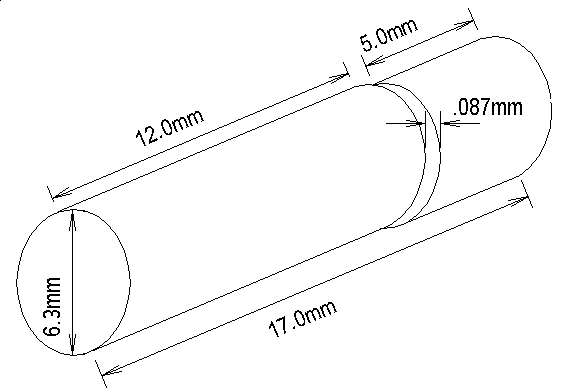
Design of offset dowel for ‘K’ series engine camshaft as an alternative to vernier timing wheels.
An offset dowel can allow the timing of a Cam to be varied with respect to its factory setting, allowing peak lift to be timed where desired within reason. The dowel fits in the end of the cam and through a hole in the timing sprocket, by altering the centre of the protruding part of the dowel and offsetting this portion the cam wheel can be moved in relation to the cam and hence the cam timing altered.
The ‘K’ series cams are doweled to their sprockets using a 6mm hollow roll pin, this is counterbored 12mm into the end of the cam with 5mm protruding for the cam sprocket to locate on.
The rollpin centre is 10mm away from the centre of the cam rotation; its effective circumference is therefore its effective diameter (20mm) times our old favourite Pi
Effective rotational circumference of dowel is 20 * 3.1416 = 62.83mm
The cam runs at half crank speed so each revolution represents 720 degrees of crank rotation, therefore to correct a single degree of cam timing the dowel will need to be offset
62.83 / 720 = 0.087mm or 0.0034"
It would be a good idea to have dowels made in 2 degree increments from 2 to 10 degrees, the maximum offset is then 34 thou/ .87mm, which still retains sufficient strength in the dowel considering the original drive is a hollow roll pin.
The following diagram shows the dimensions of the required dowel, these can be made from mild steel.

The dowels are 6mm diameter, 17mm overall length, the last 5mm of which needs to be offset by the appropriate amount.